| HOME |
|---|
CRATER
The Goblet
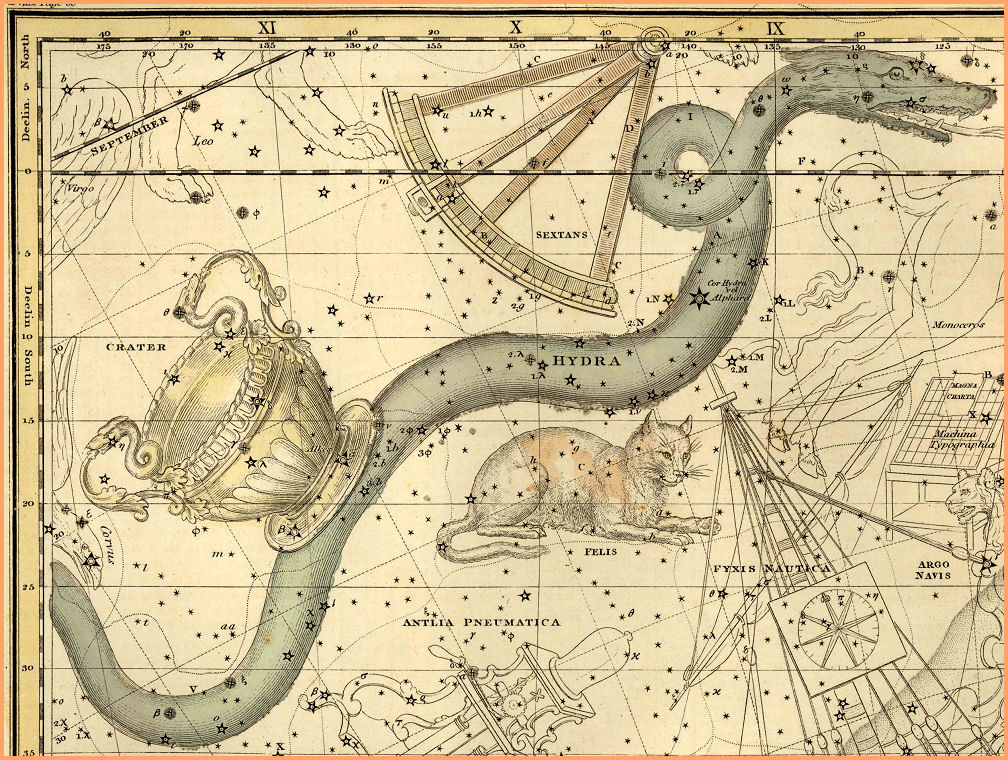
Crater - Celestial Atlas by Alexander Jamieson - 1822
| HOME |
|---|

Crater is Latin for goblet, and the goblet in the stars represents the cup of Apollo. Legend tells us that Apollo sent a crow (Corvus) to fill his cup with water. Getting distracted on the way by a tree laden with figs, the crow made Apollo wait much too long, and blamed his late arrival on a snake that barred his way. Apollo, being a god, knew the truth, and punished the crow by putting it in the sky on the back of Hydra, the fearsome many headed water snake that battled Hercules. Apollo also placed his goblet beside the crow, just out of reach, as an eternal reminder of his misdeed.
The Jamieson art above depicts an obsolete constellation, Felis, the cat. It was added in the 18th century by a French astronomer, but it was not included in the final 88 constellations formalised by the International Astronomical Union in 1930.
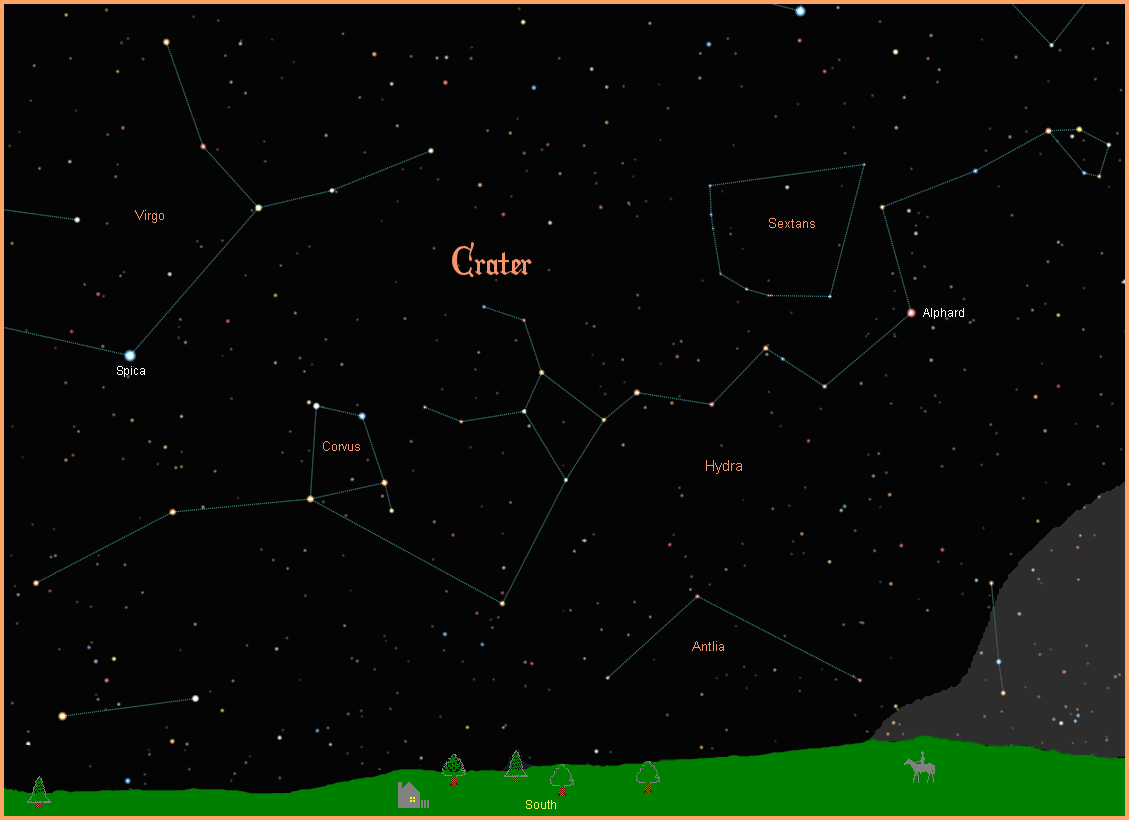
Crater is a small constellation, with not much to offer the casual observer. Its stars are bright enough to discern its shape, but otherwise unremarkable. The alpha star is Alkes, from the Arabic for the cup. It is a K0III orange giant, about 174 light years away. With a magnitude of 4.07, it is the second brightest star in the constellation.
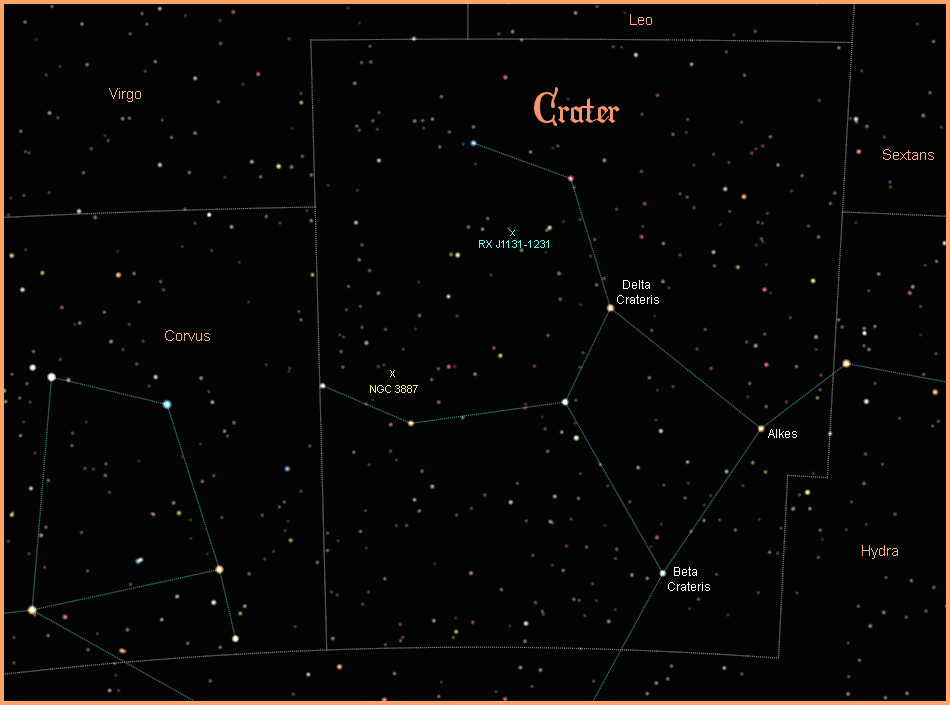
Beta Crateris is an A2IV white subgiant, with a magnitude of 4.46, about 340 light years away. The star is shared with Hydra, and is the first of six stars that proceed westward, historically known as "Al Sharasif", the ribs (of the snake).
The brightest star in the constellation is Delta Crateris, with a magnitude of 3.56. Although left unnamed by both Allen and Burnham, and on most star charts, it is occasionally referred to by the Latin name of Labrum, meaning the lip, and associated with the mythical Holy Grail. It is a G9III yellow/orange giant, about 176 light years away.
There are eight stars in Crater that have been found to support planetary systems, but they are all very far away and well beyond naked eye visibility. All the planets discovered so far are gas giants. For more information on these and other extrasolar planets, visit NASA's New Worlds Atlas, and The Open Exoplanets Catalogue.
Crater contains a few galaxies, but they are all eleventh magnitude or dimmer, and best viewed in larger telescopes. The brightest of these is the barred spiral galaxy, NGC 3887. It has a magnitude of 10.6, and is 43 million light years away.
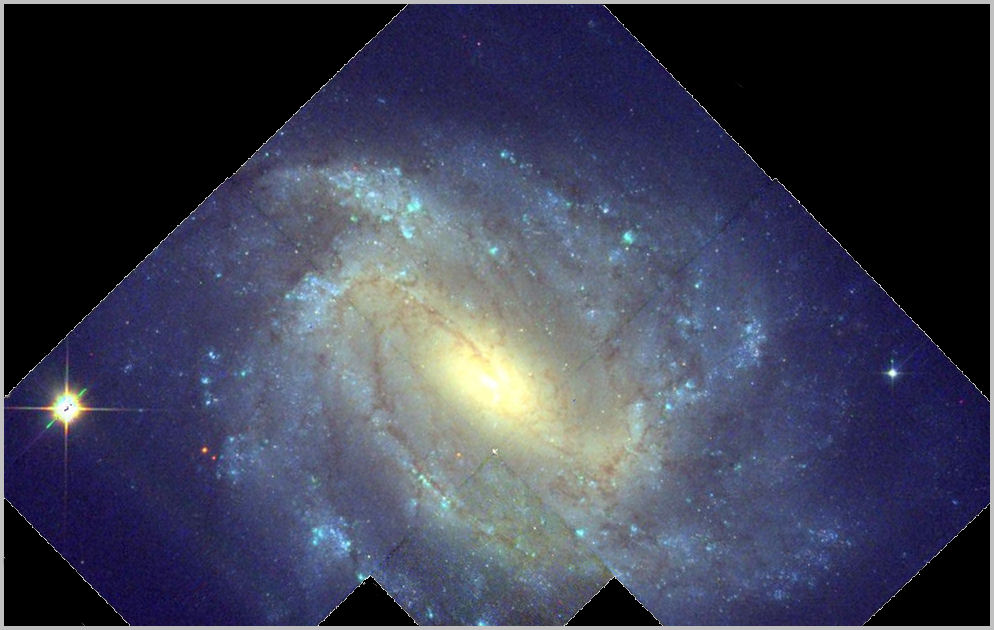
Optical images from the Hubble Space Telescope and X-ray images from the Chandra X-ray Observatory are combined in the image below, allowing scientists to capture quasar bursts around a supermassive black hole 6 billion light years away. The quasar is labelled RX J1131-1231, and its data has enabled the measurement of the black hole's spin at more than half the speed of light. Assisted by the magnification produced by gravitational lensing, it is the most distant measurement of this type ever taken, giving us an unprecedented look at the extreme violence taking place on the very edges of the Universe, 6 billion years back in time.
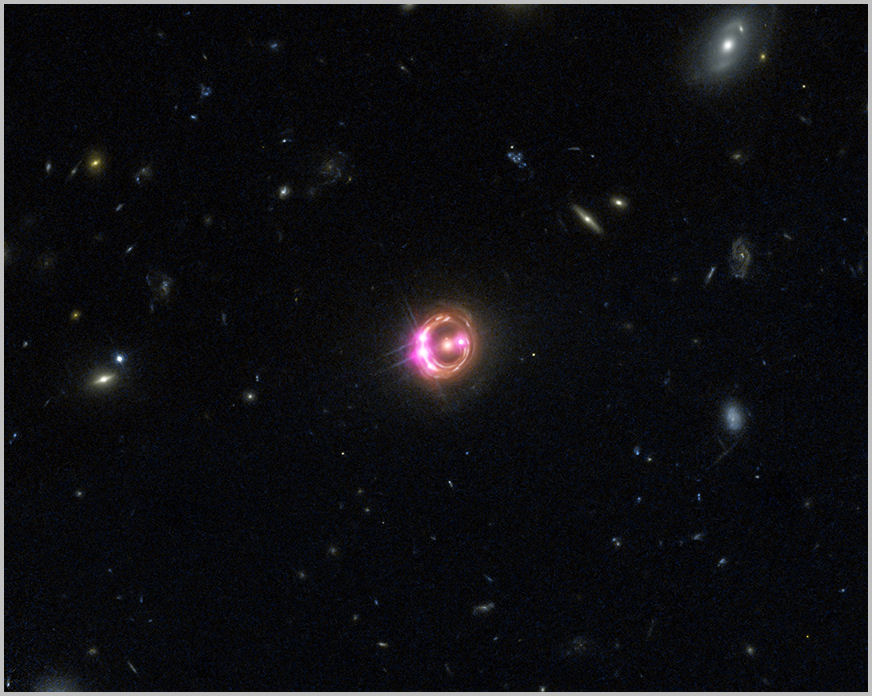
|
|
|
|
|
|